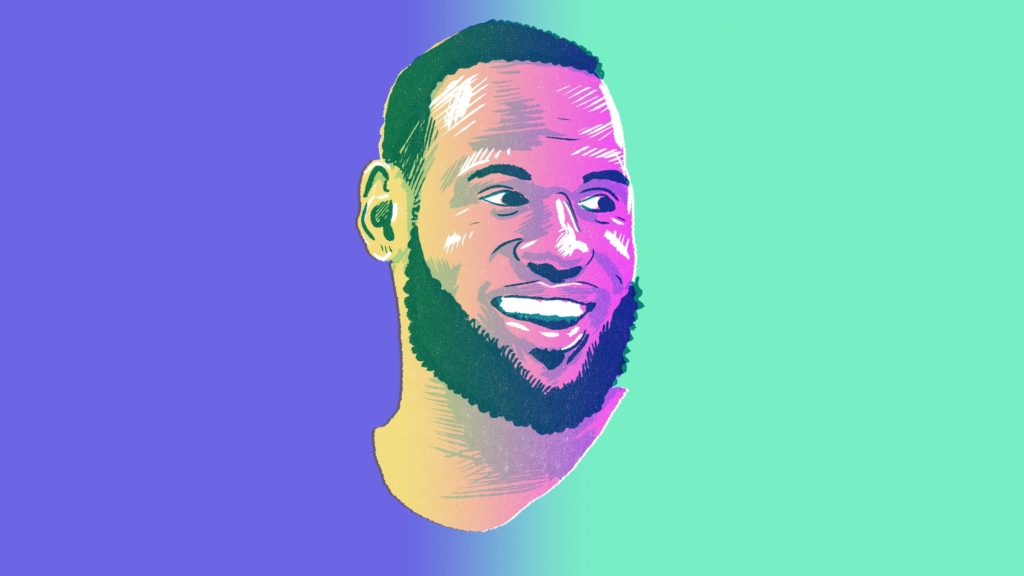I went from the favorite to the most hated.
This Kanye West lyric is an apt descriptor for many public figures. Famous to infamous. Celebrated to castigated. For some, the fall is forever. The public scrutiny overwhelming. But if there’s one thing people enjoy more than a titan’s downfall, it’s a redemption story.
That’s why these days, everyone loves LeBron James.
The “kid from Akron” burst into the public’s consciousness at the age of 17. Sports Illustrated declared him “The Chosen One” and he received the highest of praise – all before his senior year of high school.
said Sonny Vaccaro, who signed the first shoe deals with Jordan, Bryant, and McGrady.
But the trappings of stardom nearly derailed his amateur status. He first faced public scrutiny when his mother, Gloria James, gifted her star son a Hummer.
Of greater concern was the stripping of his basketball eligibility as a St. Vincent St. Mary senior for accepting two vintage jerseys worth $845 from a local Cleveland clothing store — before a county court overturned the ruling.
Legal issues did little to thwart the energy and excitement of what many considered destiny: being drafted No. 1 by the nearby Cleveland Cavaliers in the 2003 NBA Draft.
Thrusted into the limelight on a team with limited talent, James took home Rookie of the Year honors. But he reached legend status in the 2007 Eastern Conference Finals when he scored 29 of Cleveland’s 30 points – and the team’s final 25 – in a game against the Detroit Pistons and, ultimately, secured the franchise’s first-ever Finals trip.
Despite failing to win a title, James cemented his hometown hero legacy early in his career. Two MVPs. One NBA Finals trip. A lucrative Nike shoe deal.
Until one “Decision” derailed everything.
On July 8, 2010, James announced he was leaving the only NBA team he ever knew to join the Miami Heat. It wasn’t just that James was leaving Cleveland for a chance to partner with two superstars and immediately compete for championships.
It was how he did it. By “taking his talents to South Beach” via an ESPN-televised special, James maligned and embarrassed his fanbase publicly and in real-time.
Broken hearts. Sobbing fans. Burned jerseys. A bitter, comic sans-font decree from the Cavaliers owner. It should not be overlooked that the broadcast raised over $3 million for Boys and Girls Clubs, but the perceived pain far exceeded the philanthropic good.
The King had now become The Traitor. A villain was born.
For at least one season, James accepted his fate. He declared the “Big Three” would win “not two, not three, not four, not five, not six, not seven” NBA titles at an over-the-top press conference. He embraced the boos ringing out each night at every arena.
Though Miami reached the NBA Finals in his first season, fans relished as he came up short, averaging just three points per game in the fourth quarter against their Finals opponent, the Dallas Mavericks.
James was a shell of himself and never more so than the season’s pivotal moments. Why? He wasn’t LeBron James.
James told ESPN’s Brian Windhorst.
Whatever James changed – physically, mentally, spiritually – worked. Two MVPs. Two NBA Finals MVPs. Back-to-back NBA Finals Championships. But a return to the basketball mountain top wasn’t enough. James had another story to tell.
On July 11, 2014, Sports Illustrated published a LeBron James piece led by the most magical statement:
A heartfelt, hometown ode to the people that made him concluded with:
Ohioans rejoiced. Forgotten jerseys – or those that still existed – were pulled from the closet. A 25,000 square foot banner featuring James’ iconic chalk toss was raised. A city rejoiced. People forgave. The prodigal son returned.
And get to work James did. He extended his consecutive NBA Finals streak but fell short his return season following a loss to the Golden State Warriors, but, in the most improbable of fashions, delivered on a promise over a decade in the making one year later.
Against those same Warriors, James led the first-ever 3-1 comeback to deliver Cleveland a title and end a 52-year championship drought. As the horn sounded, James embraced teammates with a grin wider than the Ohio River before buckling to his knees and dropping to the court.
The weight of a town, a city and a state — for so long the laughingstock of the sports world – lifted. Over one million people attended the Championship Parade. Finally, a party.
While James didn’t deliver a second Cleveland championship, his decision to leave his city a second time was met very differently. Instead of desecration and derision, Cleveland honored the King’s return as a Los Angeles Laker with a standing ovation and touching tribute.
Once met with boos of betrayal, James experienced roars of appreciation and love from his city. Whether LeBron James was deserving of the public backlash for a decision he made at the age of 25 is debatable. His return to glory and public admiration is not.
After James capped off the strange, 2020 pandemic season with another NBA title, people once again opened up the argument around whether James, whose legacy long seemed to be capped at being 2nd greatest behind Michael Jordan, might actually be the GOAT.
And this year, in his eighteenth season, LeBron shows no signs of slowing down.
Regardless of whether one is on team MJ or team LeBron, there’s no doubt that LeBron’s career has been far more tumultuous and, therefore, one could argue, more interesting.
Hero to heel and back again, James is the perfect exemplar to illustrate just how much every sports fan loves rooting for a comeback.

